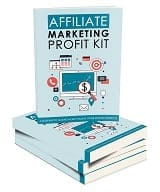
Discover the best content marketing frameworks to grow your business, attract buyers, and drive sales. Learn how to apply them step-by-step with the Lazy Blogger Method.
Content marketing is the #1 driver of sales growth in the digital age.
However, let’s face it. Most people are doing it wrong.
They hustle hard. They post everywhere. They “try” every new tactic that pops up on YouTube or TikTok.
But what do they get in return? Burnout, frustration, and… zero leads.
If that sounds familiar, it’s not your fault.
The real issue? You don’t have a proven framework.
Think about it. Would you build a house without a blueprint?
Or launch a rocket without a flight plan?
Of course not.
So why do most entrepreneurs throw random blog posts, videos, and social updates into the void? They hope for the best.
This is where content marketing frameworks come in. These structured systems don’t just make your marketing more organized—they turn it into a predictable sales machine.
And the best part?
You don’t have to create 10X more content. You just need a smarter system.
Today, I’ll break down 10 content marketing frameworks you can swipe right now. Plus, I’ll show you how to apply the Lazy Blogger Method so you get maximum visibility with minimum effort.
What Are Content Marketing Frameworks (And Why They Work Like Magic)?
Let’s strip away the jargon.
A content marketing framework is a repeatable formula for creating, distributing, and measuring content that actually drives results.
Without a framework, you’ll:
Post inconsistently.
Chase shiny objects (latest social media hacks).
Waste hours creating content no one sees.
With a framework, you’ll:
Stay consistent and visible.
Build authority in your niche.
Attract buyers who trust you.
Turn content into leads and leads into sales.
👉 In short: frameworks transform your content from random activity into revenue-generating assets.
The Core Components of a Content Marketing Framework
Every framework—no matter which one you choose—should cover these five pillars:
Clear Goals – Are you chasing awareness, leads, or direct sales?
Audience Insight – Who are you speaking to? What do they secretly want?
Content Types – Blogs, short videos, podcasts, case studies, or email sequences.
Distribution Channels – Where your ideal buyers hang out (LinkedIn, Instagram, TikTok, YouTube).
Measurement System – KPIs that track growth (traffic, conversion rates, sales).
Get these right, and everything else falls into place.
The $10,000 Lead Magnet Secret That’s Making Ordinary Marketers Rich
Types of Content Marketing Frameworks (Pick the One That Fits Your Style)
1. The Linear Framework – Best for Beginners
Think step-by-step assembly instructions.
Research topic → Write blog → Publish → Share → Measure.
It’s simple, predictable, and perfect if you’re just starting.
$47,000 Online Mistake: 10 Ways to Boost Your Online Biz
2. The Modular Framework – Best for Experienced Marketers
This gives you flexibility. You can swap, repurpose, and test content “modules” to see what works best.
For example: turn one long blog into an email series, a LinkedIn carousel, and a YouTube short.
3. The Hybrid Framework – Best for Growth-Stage Businesses
The sweet spot: structure + flexibility.
You follow a proven system while leaving room for creativity and rapid testing.
👉 If you’re unsure which to pick, start with Hybrid. It scales with your business.
The Lazy Blogger Method: Work Smarter, Not Harder
Now here’s where most marketers fail. They create one blog, hit publish, and move on. That’s like buying a Ferrari and leaving it in the garage.
The Lazy Blogger Method flips that script.
Here’s how you do it:
Step 1: Repurpose content – One blog = 7+ assets (reels, carousels, emails, podcasts).
Step 2: Automate distribution – Use tools like Buffer or Publer to schedule content across platforms.
Step 3: Go evergreen – Write about timeless topics so your content brings traffic for years.
Step 4: Leverage AI tools – Let AI handle drafts, headlines, SEO optimization, and summaries.
This means you publish less often but get 10X more visibility and leads.
10 Proven Content Marketing Frameworks That Drive Sales
Let’s break down actionable systems you can swipe today.
1. The Hero’s Journey Framework
Use storytelling to position your brand as the guide and your customer as the hero. Perfect for case studies and testimonials.
2. The Problem-Solution Framework
Hook readers by presenting their pain point → agitate it → offer your solution. Classic NLP persuasion structure.
3. The Content Pillar Framework
Create one long, valuable piece (like this article), then break it into smaller chunks for social media, emails, and ads.
4. The TOFU-MOFU-BOFU Framework
TOFU (Top of Funnel): awareness content (blogs, reels).
MOFU (Middle of Funnel): nurturing (guides, webinars).
BOFU (Bottom of Funnel): conversion (case studies, demos, testimonials).
5. The Topic Cluster Framework
Build authority in search engines by writing one “pillar” article supported by multiple related sub-articles. Boosts SEO massively.
6. The 90-Day Sprint Framework
Plan content in 90-day cycles. Publish, measure, refine. No overwhelm.
7. The Evergreen Framework
Focus on timeless “how-to” content that ranks and drives leads for years.
8. The Conversational Framework
Content that reads like you’re talking directly to the reader. Think emails, newsletters, or LinkedIn posts.
9. The Case Study Framework
Show proof. Results sell more than promises. Use step-by-step breakdowns of client wins.
10. The Campaign Framework
Align content around launches, promotions, or seasonal pushes. Perfect for driving urgency and sales.
Case Study: How a Small Business Tripled Sales Using Hybrid + Lazy Blogger Method
A boutique fitness studio struggled with content consistency. They tried random posts but saw little engagement.
We applied the Hybrid Framework with the Lazy Blogger Method:
Wrote one weekly blog (pillar content).
Repurposed it into 5 social posts, 2 reels, and an email.
Used automation to drip content over 30 days.
Result?
3X more website traffic in 90 days.
Email list doubled.
Sales of their group classes jumped 250%.
👉 Proof that you don’t need more content—you just need a smarter system.
How to Measure Success (And Stop Wasting Time)
Forget vanity metrics like likes. Instead, track:
📈 Traffic (Google Analytics)
📝 Engagement (time on page, shares)
📧 Leads (email signups)
💰 Sales (conversion rates)
Use tools like SEMrush, HubSpot, or even Trello to track and optimize.
FAQs About Content Marketing Frameworks
(expanding on earlier)
Q1: How do I choose the right framework?
Start with Hybrid—it balances structure and flexibility. Adjust as you grow.
Q2: Do I need a team to execute this?
Not at all. Solopreneurs can crush it with AI + automation tools.
Q3: Should I invest in paid ads or stick to frameworks?
Start organic. Frameworks amplify reach. Once you have content that works, use ads to scale.
Q4: Can frameworks boost SEO rankings?
Yes—especially Topic Cluster + Evergreen Frameworks. Google rewards structured, consistent content.
Q5: What’s the ROI timeline?
Expect 3–6 months for steady growth. But engagement spikes happen as soon as you repurpose content.
Q6: How do I avoid burnout?
Use the Lazy Blogger Method. Focus on repurposing, not over-producing.
Final Word: Your Roadmap to Predictable Content Sales

If content feels like chaos, it’s time to stop “winging it” and start frameworking it.
Pick one of the 10 proven frameworks. Then, plug in the Lazy Blogger Method. Let your content become the sales engine it was meant to be.
Because when you master this game?
You don’t just create content.
You create buyers.
Discover more from AngelinaM
Subscribe to get the latest posts sent to your email.

























